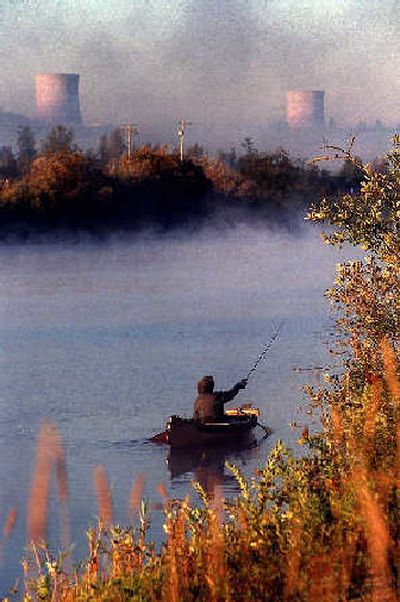DéjÀ WPPSS?

RICHLAND, Wash. — When an ambitious plan to build five nuclear power plants in Washington state fell to pieces in the 1980s, it caused the largest municipal bond default in U.S. history.
Lawmakers and customers showered criticism on Northwest utilities that were party to the debacle. Voters passed an initiative to rein in public spending on big power plants. No entity took more heat than the Washington Public Power Supply System, or WPPSS, which led the effort. To this day, the project suffers under the moniker, “Whoops.”
But in the years since the scandal, the utility changed its name to Energy Northwest, weeded out those responsible and began the laborious process of rebuilding its public image. Now it has plans for a new power plant — one that many agree employs promising technology, but which has been carefully designed to avoid a public vote.
The proposed coal gasification plant would be the most ambitious project since the colossal failure decades ago, and some critics are already raising concerns about the viability of the technology, the potential environmental hazards and the public financing of the project.
For decades, the Pacific Northwest has relied on relatively cheap power from hydroelectric dams. In the late 1970s, WPPSS proposed building five nuclear plants to meet rising demand for electricity — demand that never materialized. The project collapsed in the 1980s amid massive cost overruns, leaving the concrete shells of four unfinished plants and $2.25 billion in worthless bonds. Bondholders eventually reached a settlement after years of court battles.
Today, demand is gradually increasing as the region’s population grows and environmental pressure on dam operations mounts. Some argue that conservation and investment in renewable energy resources, such as the wind farms sprouting in Eastern Washington, will meet rising demand.
Energy Northwest supports and has participated in those efforts but does not believe they alone will meet demand, said Tom Krueger, the agency’s project manager. In addition, he said, the region won’t support hydropower expansion, a new nuclear plant in Washington simply isn’t an option, and natural gas has become inordinately expensive.
Instead, Energy Northwest is proposing what is called an integrated gasification combined cycle plant. The plant would generally use coal or petcoke, the waste product from oil refineries, that would be turned into a gas to be burned to generate power. The plant could also burn natural gas if the price declines.
Krueger compared the emissions from an IGCC plant to those of a natural gas plant, generally carbon dioxide.
“The question is not whether you can get energy in coal, but whether you can use it in an environmentally friendly way,” Krueger said.
The proposed plant also would capture the carbon dioxide emissions for storage. In other parts of the country, emissions are injected into spent oil wells. Energy Northwest is taking part in a study into injecting the emissions into basalt deposits, which are common in the region.
“Of course it raises questions. Unless you examine that stuff, you never know,” said Ronald Hatfield, chairman of the Energy Northwest board of directors.
Hatfield does not believe the bad memories from WPPSS should impede the plant’s progress.
“I don’t know if they’ve forgotten, but it’s always been my attitude that, because mistakes were made in the past doesn’t mean you don’t continue to try,” he said.
Energy Northwest is a joint agency, comprising 19 public utilities and municipalities, which operates the only WPPSS nuclear plant in service and a hydropower project, as well as wind, solar and biomass power projects.
The agency’s board of directors voted to push forward with the new project in July, allowing Energy Northwest to pursue a plant site west of the Cascades and to continue to research the technology.
“To tie this to the WPPSS era is ludicrous,” said Bob Boyd, an Energy Northwest board member who voted against the proposal, partly because he believes the power the plant produces will be too expensive.
John Prescott, board member from Seattle City Light, also voted against the plan, citing his utility’s policy against additional carbon-based power generation.
“It just might be time for us to try to meet our needs through renewables and conservation, then look at what else,” Prescott said.